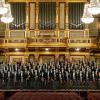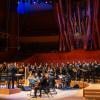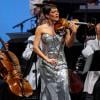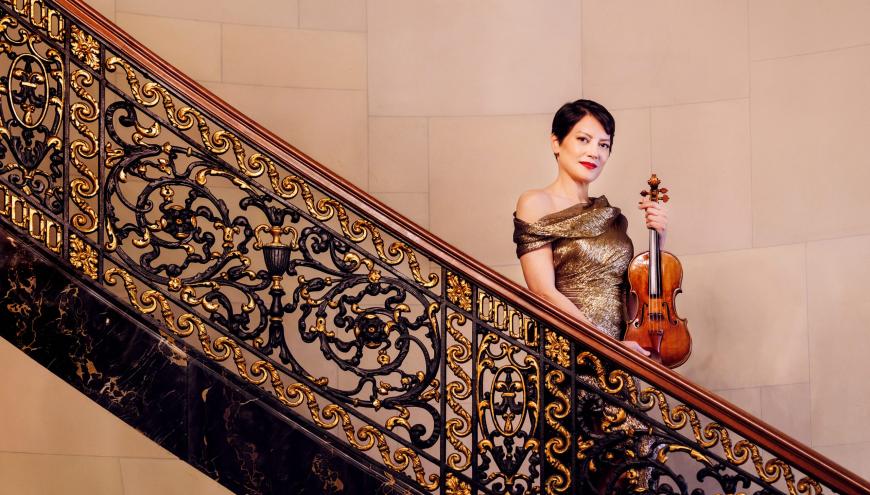
Already a seasoned performer at age 11, when she made her debut with the Los Angeles Philharmonic and appeared on The Tonight Show with Johnny Carson, violinist Anne Akiko Meyers, now 53, is still riding high. A champion of contemporary composers, she has also collaborated with today’s most celebrated conductors, orchestras, and presenters.
Next weekend, Feb. 16–18, Meyers takes the reins of the Laguna Beach Music Festival as this year’s artistic director, performing in three programs, the first of which features works by Arvo Pärt and Heitor Villa-Lobos, as well as a world premiere by Philip Glass. Hailed as “the Wonder Woman of commissioning” by The Strad magazine, the violinist was recently nominated for a Grammy Award for her live recording with Gustavo Dudamel and the LA Phil of Arturo Márquez’s concerto Fandango, written for her in 2021.
Born in San Diego, Meyers began violin lessons with Alice and Eleonore Schoenfeld at the Community School of Performing Arts (now the Colburn School) before moving to New York at age 14 to study at The Juilliard School with the legendary teacher Dorothy DeLay. Just four years later, Meyers recorded her debut album, which featured concertos by Samuel Barber and Max Bruch, with the Royal Philharmonic Orchestra (RPO) at Abbey Road Studios.
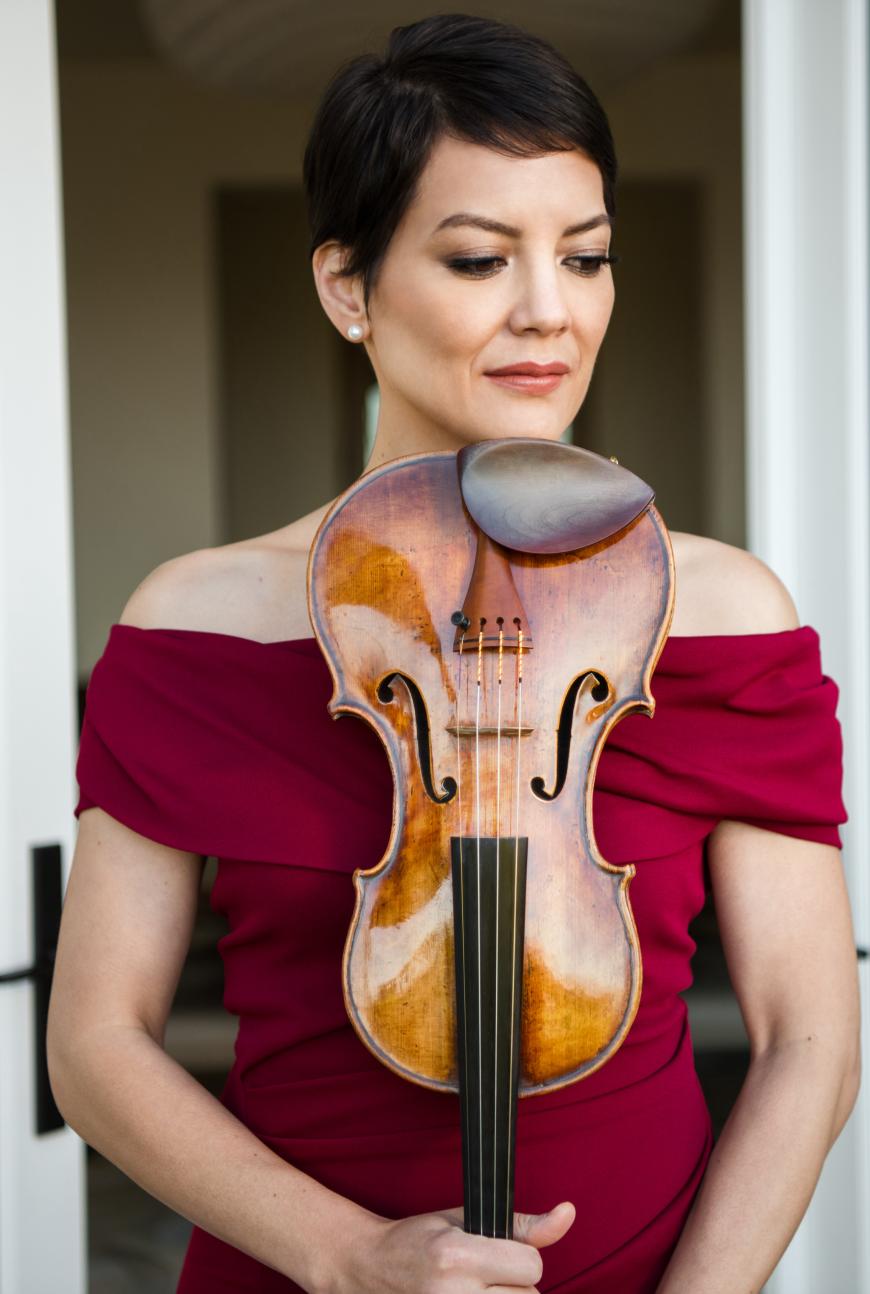
Fiendishly busy ever since, the violinist still keeps a rock-star-like schedule. She recently performed Glass’s Violin Concerto No. 1 with the LA Phil at the Hollywood Bowl and will reprise the piece with the PKF – Prague Philharmonia this spring. As part of her 2023–2024 season, she has also performed Felix Mendelssohn’s Violin Concerto with the RPO on its U.S. tour, as well as the world premiere of Billy Childs’s In the Arms of the Beloved with the Los Angeles Master Chorale.
SF Classical Voice caught up with the Los Angeles-based violinist by Zoom. She discussed topics ranging from her affinity for living composers and her experience working with Arvo Pärt to programming the Laguna Beach Music Festival, a co-presentation of Laguna Beach Live! and the Philharmonic Society of Orange County.
Was there music in your family, and why did you choose the violin?
My mother played a lot of David Oistrakh’s [recording of the] Beethoven Violin Concerto when she was pregnant with me and would continue playing music for me as she fed me as a baby. A baby’s development is so enhanced by music, and the sensory appreciation for food and music combined made me a very happy and hungry baby. I started playing violin when I was 4 and was living in Ridgecrest, California, [and] I took to the violin immediately. It was handed to me and was like a natural fit from the start.
You’re the artistic director of the 22nd annual Laguna Beach Music Festival and will be performing all three nights, in addition to a prelude concert on Feb. 14. Works include Camille Saint-Saëns’s “The Swan”; Jakub Ciupiński’s Wreck of the Umbria, a work for violin and electronics that you commissioned in 2009; and Philip Glass’s New Chaconne, a world premiere. How did you decide on this programming?
When they invited me to be the director of the festival, I thought it was a wonderful opportunity. They said, “You can bring your programming and your ideas.” They’re very flexible and were open to my suggestions. I immediately started thinking about curating this program. I love working with living composers and wanted to showcase the incredible talent that’s in Southern California and also perform music by a lot of friends and composers I’ve worked with previously.
[I’m playing] the world premiere of Philip’s new work that he just wrote at his piano. He’s 87 years old and is quite extraordinary. His facility is still so active. He wrote this work, New Chaconne, and I’ll also be performing [an arrangement of] his beautiful “Metamorphosis II,” based on piano etudes, with harpist Emmanuel Ceysson. I recorded with [Ceysson] almost a decade ago, and we’ve been friendly for a long time. He’s an extraordinary talent.
What is the process involved in commissioning a new work?
I have an obsession [with] composers. Basically, after listening to their music and [when] it’s in my ear for some time, I approach them via their publisher or email or somehow contact them and ask if they might be interested in writing for violin or arranging a famous work. Even Saint-Saëns’s Carnival of the Animals is newly imagined for Laguna.
It’s a really amazing process in that I can work so intimately with so many composers — from Arvo Pärt to John Corigliano, Mason Bates, Adam Schoenberg, [Einojuhani] Rautavaara, and Glass — and to see how they work. And with Arturo Márquez, most recently his violin concerto. I’m in awe of their brains, their entire operating systems.
To actually not only create the notes but for them to tell a story and move audiences to such a level of euphoria is just so powerful. It’s an amazing legacy to actually be kind of a muse to these composers in order to leave more violin repertory for future generations.
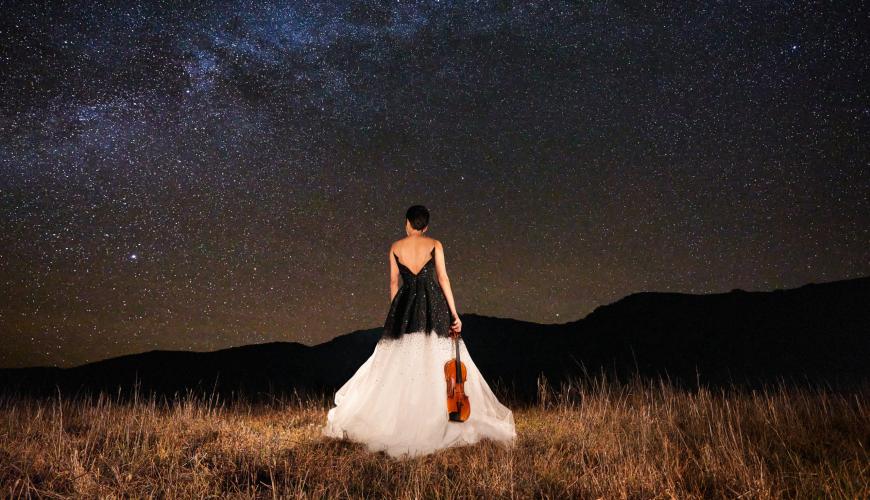
So, it’s a two-way street? Sometimes they reach out to you, and other times it’s you who tracks down a certain composer?
It’s a combination. Composers can be quite busy. They have a queue and can be working on an opera [or] a ballet. They might have a lull in their creative process and think, “Maybe I might take a time-out and write this short work.” Just getting the idea in front of them is key; having a music director very enthusiastically responsive to wanting to premiere [a work] is incredibly helpful and critical in bringing the work to life.
I’m also listening to music a lot. I really love the choral world because I find that the violin can sing very similarly to the voice. We discussed Billy [Childs’s] piece for over a decade. He finally found time to write it, [and] I was his mother’s voice. I hope to record it with Grant Gershon and the LA Master Chorale. It’s an incredibly powerful work; it was an epic experience.
And when you’re not performing, can you be found attending concerts?
Yes. I go to lots of concerts when I can. I have a giant curiosity for all kinds of music. It leads me down a rabbit hole, where I’m listening to Brian Eno and then I’m like, “Oh, wow, that’s so cool.” Then it keeps on going and going and going — like a flower opening up. There are many different ways I find inspiration. I’m just so thankful to all composers for being so creative. It’s so inventive, their language.
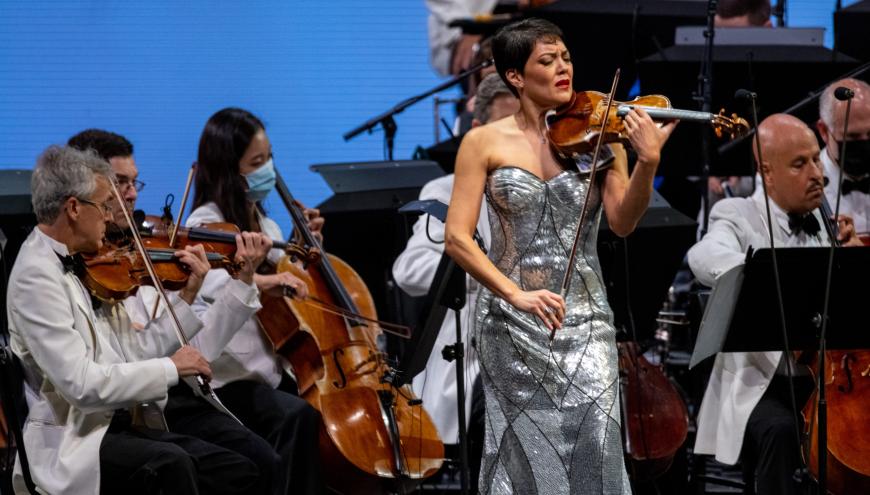
What’s this I heard about you chasing down Arturo Márquez?
I did. I heard his Danzón No. 2, and basically, my jaw fell to the floor that a living composer had written it, and I was obsessed with tracking him down after that. I always had this idea of bringing the mariachi tradition into the concert hall. It’s a really fascinating folk tradition that is always left for mariachi bands to enjoy and not for symphony orchestras to explore.
I came up with this idea: How would it sound to actually incorporate Mexican folk traditions into this symphonic language? He was so intrigued. He wrote back a little time later and said he was very interested in writing this concerto. I’ve performed it over 25 times already, including at Carnegie Hall last season and at the Auditorio Nacional in Mexico City. I’ll [take it] to [Chicago’s] Grant Park this summer and [perform it] with the Utah Symphony and Giancarlo Guerrero in May. It’s got legs, and it’s going to live forever now.
To see a piece like that be born, be part of the process, I’ve sort of mothered it. But now that it’s out in the world, I’m just so thrilled that audiences and other violinists will be able to perform it. I also asked Arturo to arrange his Danzón No. 2 for violin and piano, and we’re premiering that in Santa Barbara sometime at the end of this year.
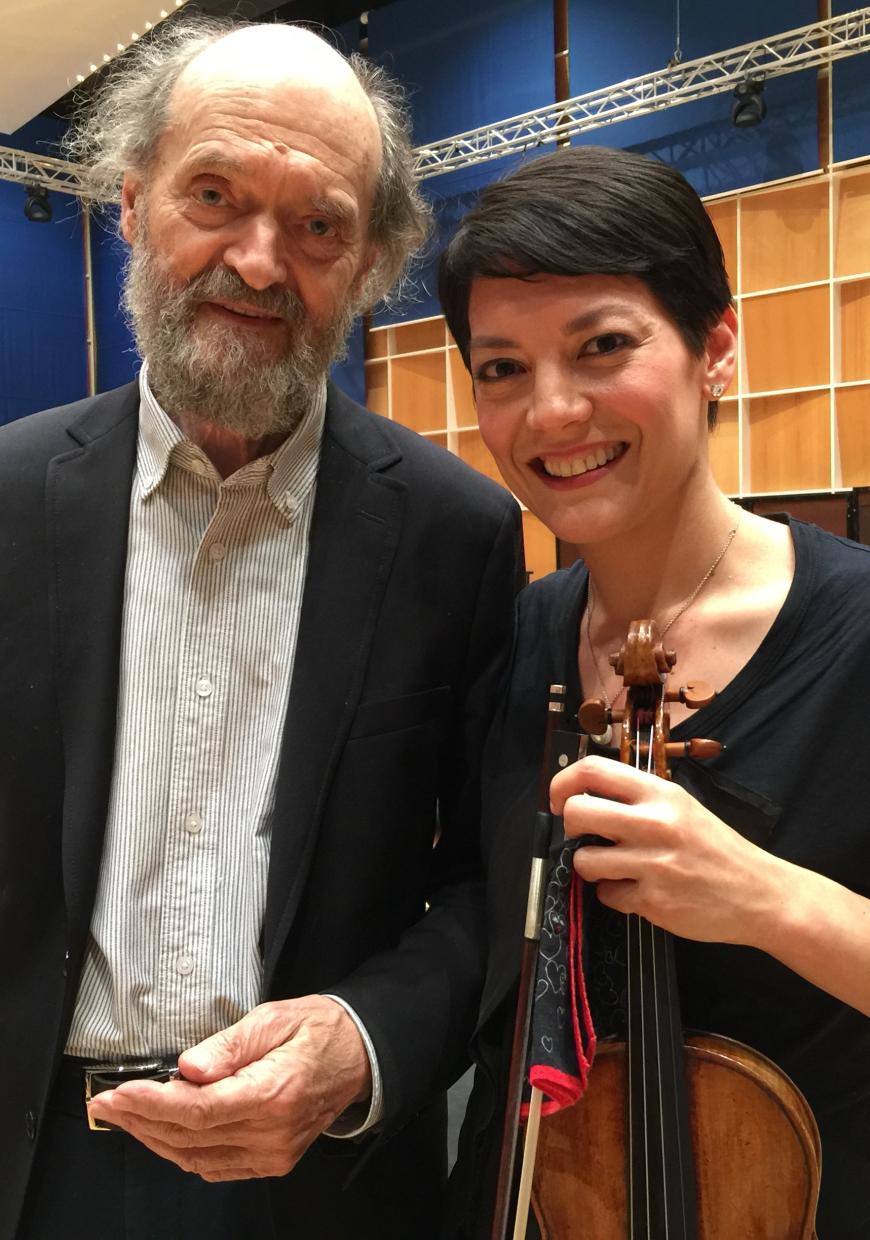
You included several Arvo Pärt compositions — Fratres and Spiegel im Spiegel — on your 2018 recording Mirror in Mirror. What was it like working with the great Estonian composer?
His music is extraordinary. It’s like meeting a deity. It was a little intimidating at first. I was recording and performing his music in front of him. He’s just such a gentle force of nature, like a still ocean — it runs deep, so deep you can’t see the bottom. That’s what Arvo Pärt is like. He’s a spiritual wave that’s almost blank because it’s so deep.
On another note, what advice do you have for aspiring violinists.
Those things are always tricky. Put your phone down and, I think, just really try to listen to as much music as you can. Go to concerts. It’s always a different experience when you actually sit in a concert. You really feel the electricity that is pulsing throughout the orchestra, the music director, the audience. It’s a special environment to be in. That’s my advice to young aspiring musicians: Listen to as much music as you can in every kind of way.
I understand that you believe that “music is life and life is music.” Can you please elaborate on that?
There is no end; it’s all one. It’s like a cyclical continuation of creativity and beauty, really. It’s just so beautiful to be able to express oneself through music and to share in those emotions with audience members. The power that music has to reach your deepest memories — it can help Alzheimer’s patients and stroke patients. I think all of us have this core, this inner core [where] our soul is basically devised of music, so when we tap into that, we feel a pulse immediately. It energizes us. It electrifies us. That’s where I feel it’s all related.


